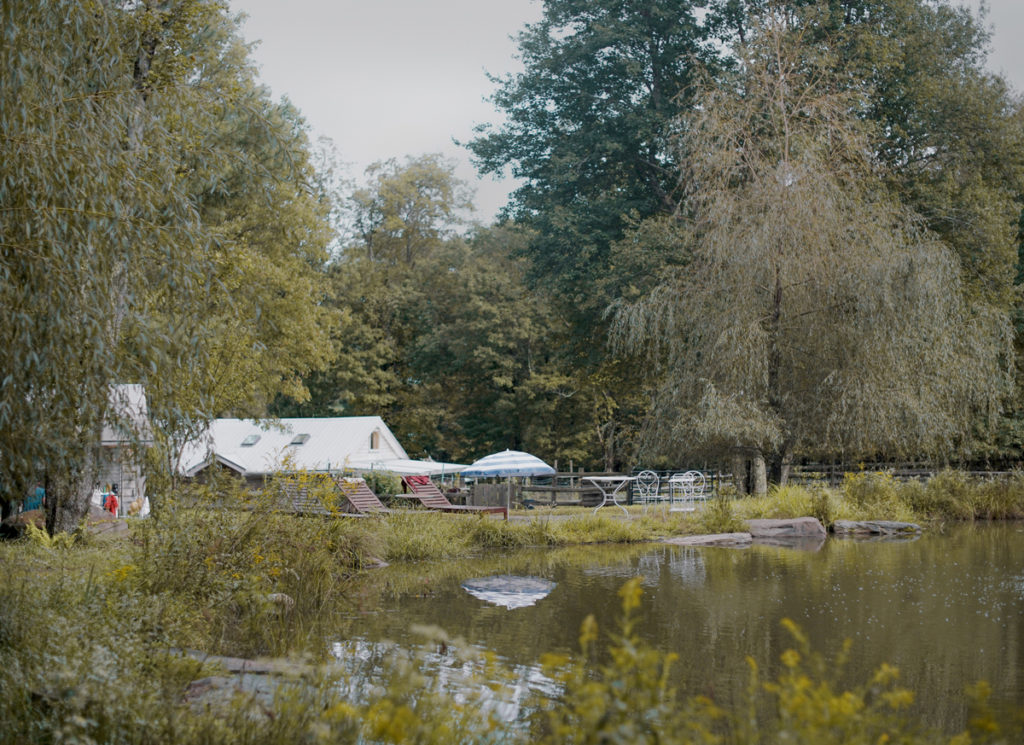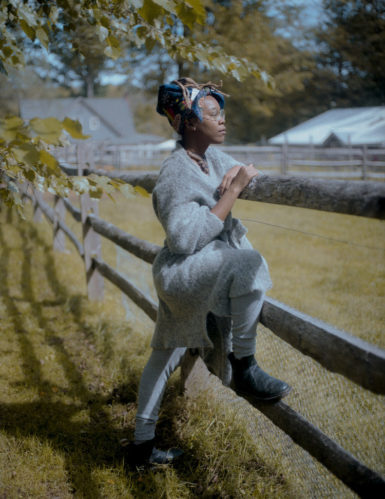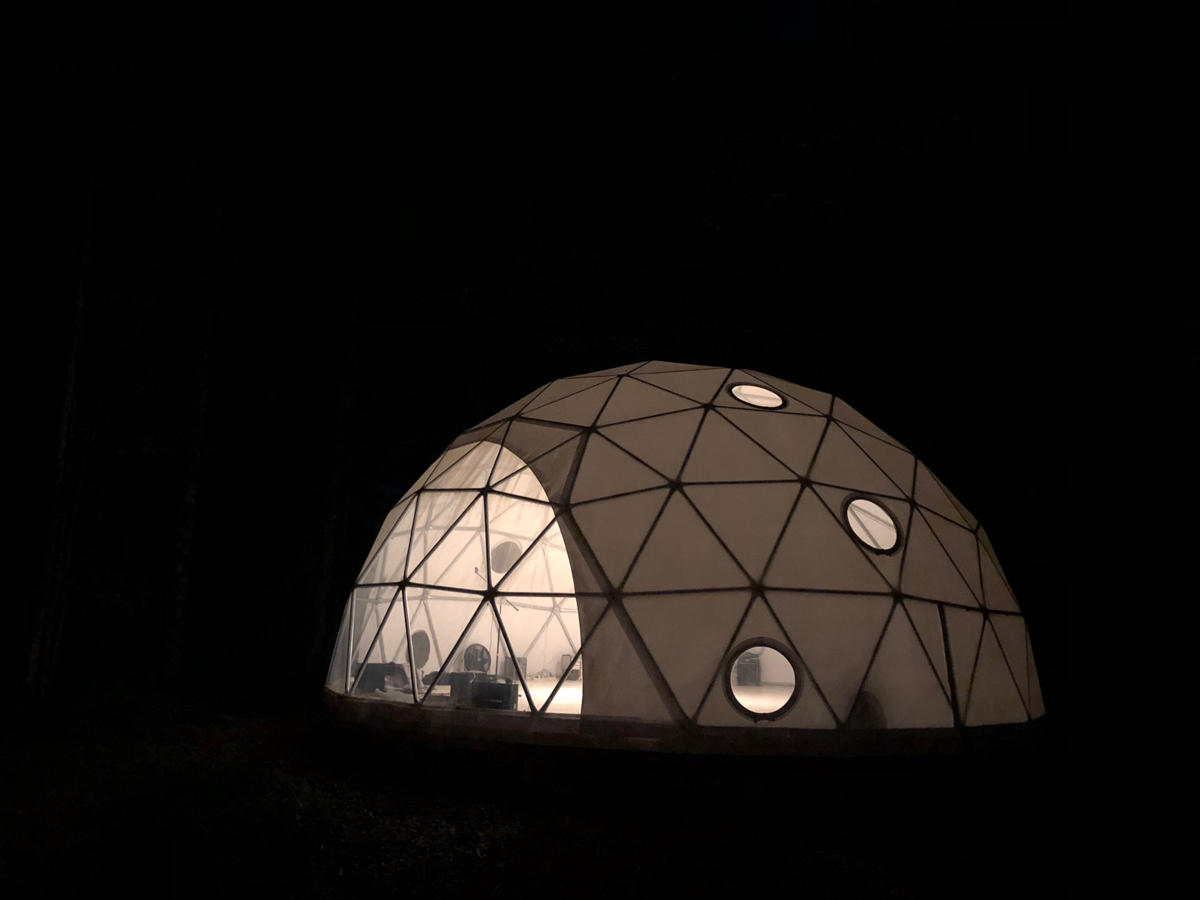[ad_1]

Activation is a weekend residency for black queer artists and their allies at the Outlier Inn, in Woodridge, New York.
COURTESY ACTIVATION
Spread out across 12 lush acres in a remote part of Upstate New York, about 90 minutes from the city, Activation, a new weekend-long artist residency program for black queer artists and their allies, is an oasis. The camp, located at the Outlier Inn in Woodridge, boasts several lodging spaces (including a vintage trailer, cottages, and bungalows), an open-air kitchen, a carved-wood dining table that seats 50, a massive store of split logs, and outdoor showers adjacent to an unenclosed white porcelain tub, with claw feet digging straight into the earth.
“Everything that we needed was there,” Kamra Hakim, Activation’s founder, told ARTnews one balmy morning this past summer as we snaked up the highway en route to the site. “All we had to do was bring ourselves and our desire to be open and connect. I just wanted artists of all backgrounds and all levels of exploration to feel welcome in the space.”
Hakim founded Activation in July 2018, and welcomed her first residency cohort that September. (This year’s residency program takes place this weekend.) She wanted to set up a retreat for artists of all disciplines—including visual art, music, dance, and more—as a means to escape the drudge of not being seen on multiple levels: as artists, as people of color, as queer people.

Kamra Hakim, Activation’s founder.
COURTESY ACTIVATION
As a queer, black, Muslim musician from Minnesota, Hakim felt compelled to create an art experience for those who have been historically oppressed. She recognized the need for spaces in which folks who have struggled to find support for their creative endeavors could both commune with nature and engage their creative impulses. Using her experience working in music festivals, including at the 2018 edition of Bonnaroo in Tennessee, Hakim soon began making preparations for what would become Activation. She selected a pool of artists who would work well together and inspire each other, and prioritized those from historically marginalized backgrounds, whom she wants to feel free and uninhibited during their residencies.
“For me, it’s about radical accessibility and inclusion,” said Hakim, who often punctuates her conversation with enthusiastic finger snaps. “Not everybody has the opportunity to regularly practice their art or invest in it. I’m trying to disrupt gatekeeper culture in the arts—to disrupt this energy that people put out by implying, ‘You’re not a real artist if you don’t do this or that.’ ”
The residency application for Activation asks prospective artists at any stage of their career what they seek to achieve in the space. Songwriters can perform their music, and visual artists can put their compositions on display. Others can bring loose ideas for a project that are then fully realized and produced on-site.
One such artist who wanted to develop a half-formed project through activation was Tonje Thilesen, a photographer from Norway. Last year, she took portraits of other residents for what would eventually become a photographic series that charted friendships as they blossomed. She first took candids of fellow artists during the residency and later asked her subjects to sit for portraits long after the program had ended. Over jerk chicken and catfish at Lion’s Milk in Williamsburg, Thilesen described the changes she detected in the photos of two muses-turned-friends—Jamelda McDonald, a video artist, and Kuwilileni, a mixed-media artist. “In the beginning, the photos had a sort of awkward air,” Thilesen said. Her subjects “eventually became more comfortable. Now, they respond to my direction completely. I met some of my best friends at Activation.”

The inaugural cohort of residents at Activation, September 2018.
COURTESY ACTIVATION
In a hideaway house in Bushwick, Juan Felipe Rendon, another Activation resident, sprayed two therapeutic scents in my direction: Dreamlover, a relaxing, presleep fragrance of lavender and chamomile, and Primo Dom, a rise-and-shine, energizing spray with woodsy hints of cardamom and black spruce. The scents form the core of Rendon’s new aromatherapy line, Shocks of Love, which will debut at Activation later this month.
Rendon, who is also a dancer and wellness consultant, attended Activation last year, as part of a weekend break from a day job running data analytics at A24, the film distribution company best known for releasing Moonlight and Hereditary. Though Rendon enjoyed his job, the weekend at the Outlier Inn had a profound impact, causing him to give notice that he was quitting A24 as soon as he returned.
“The missing ingredient for me was someone who specifically framed my talent in a pragmatic way,” Rendon said. He described Hakim as brimming with “Virgo energy,” and someone who senses the potential for strong, personal, and creative connections between people. Her vision is alchemy realized, he said. “Kamra sees the work to be done and is great with connecting the dots. That’s what Activation is about.”
Hakim’s vision for Activation is a place where artists go to shake off doubt and unburden themselves of any forces that would otherwise tell them no, whether it be about their merits as a “real artist” or concerns that now isn’t the right time to pursue their creative aspirations. She wants it to be an alternative to the exclusionary mainstream art world and other creative industries, and one that is centered around community between artists who can bond over a shared history of struggle. These creators might find themselves one day crying as they tell their stories of past trauma and then, on the next day, collaborating on a project.

A geodesic dome is at the center of the programming at Activation.
COURTESY ACTIVATION
On deck for this year’s Activation programming are reiki healing, pleasure workshops (like one centering on writer Audre Lorde’s famed 1978 essay “Uses of the Erotic: The Erotic as Power” as queer sex education), and a variety of performances, including one in the facility’s geodesic dome, whose lighting system responds to sound, cycling through warm and cool colors at night.
“One thing I’ve been grappling with a lot lately is desirability politics in relation to sexual and emotional liberation,” Hakim said. “Feeling like, because I’m in this body, that I may not be as desirable as people in white bodies is something that other people who look like me may also be experiencing. I’m really interested to see how that’ll shake loose at the residency this year.”
Activation currently takes place only each September, but Hakim eventually wants to own a property where Activation will be permanently installed. She hopes to expand the residency to a year-round program through which artists can stay for months-long periods. Until then, Hakim is satisfied that Activation’s spirit can live anywhere, and beyond its current home in Upstate New York.
Describing a moment during last year’s Activation, when she’d been looking around at people dancing in the dome while others baked together in the kitchen, Hakim reflected on the power of seeing her dream of creating a space like Activation come to life. “Art is inherently healing. It shows us our humanity. When artists feel free and liberated, it allows them to go deeper into their creation and feel a sense of ownership of it.”
[ad_2]
Source link

